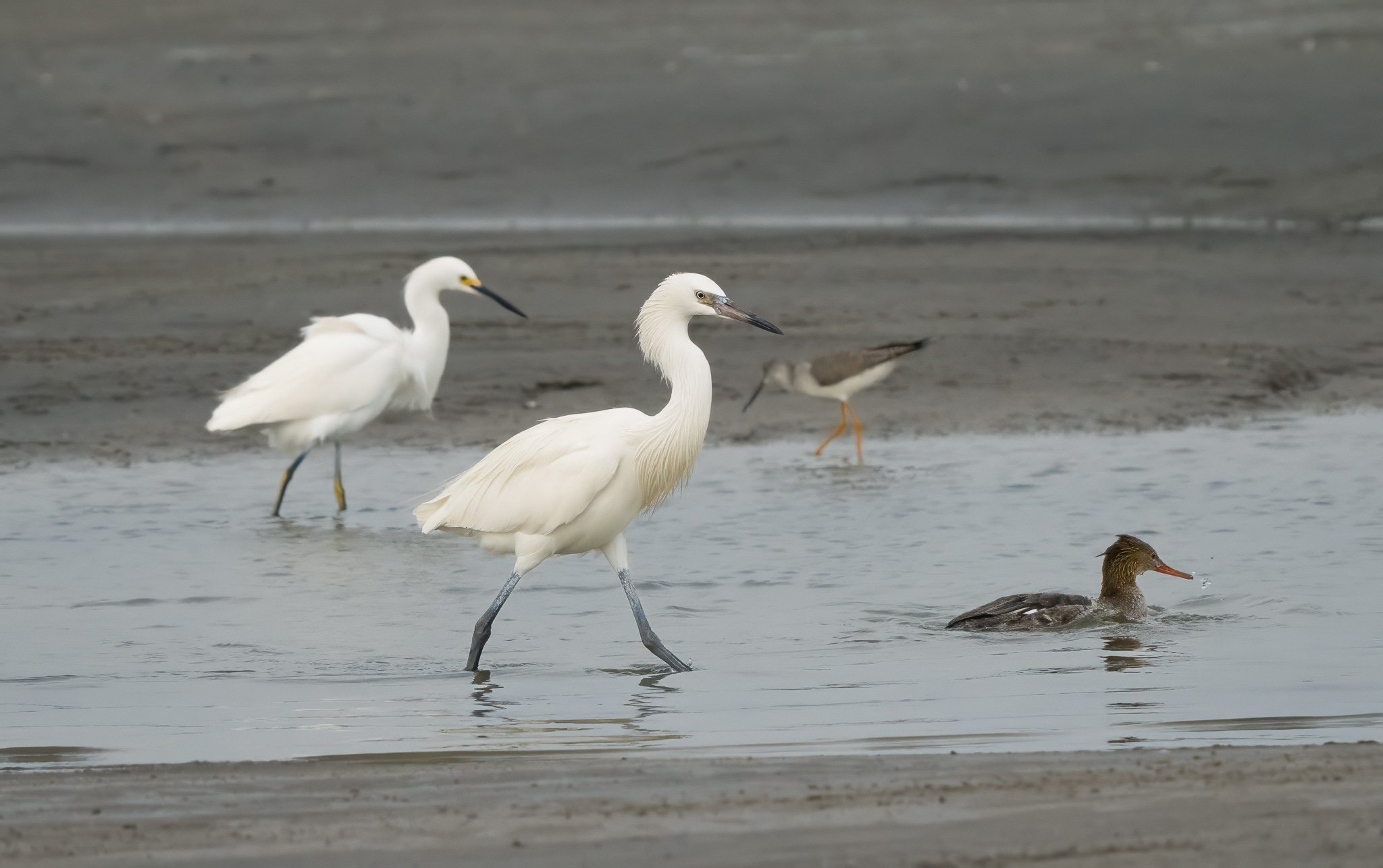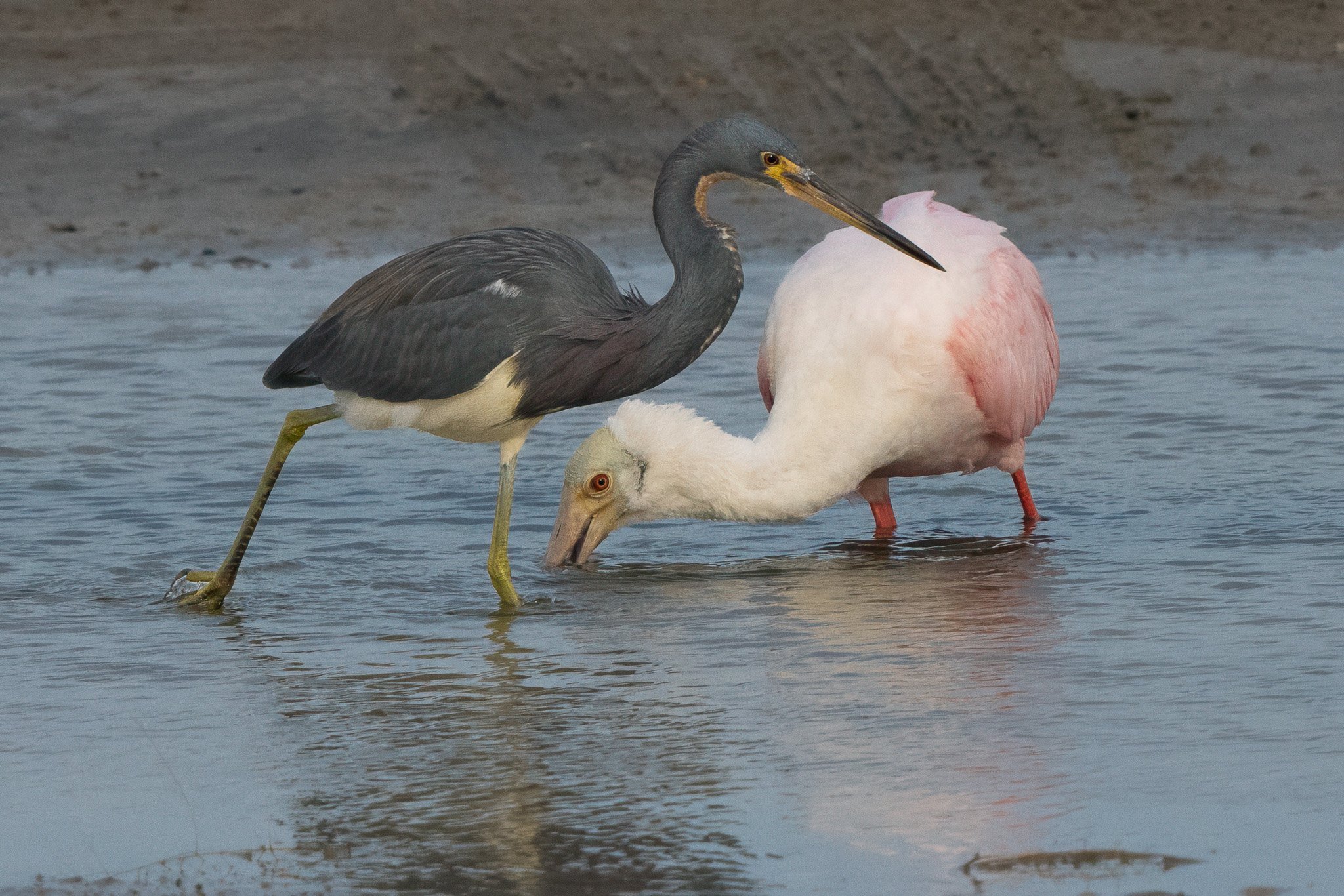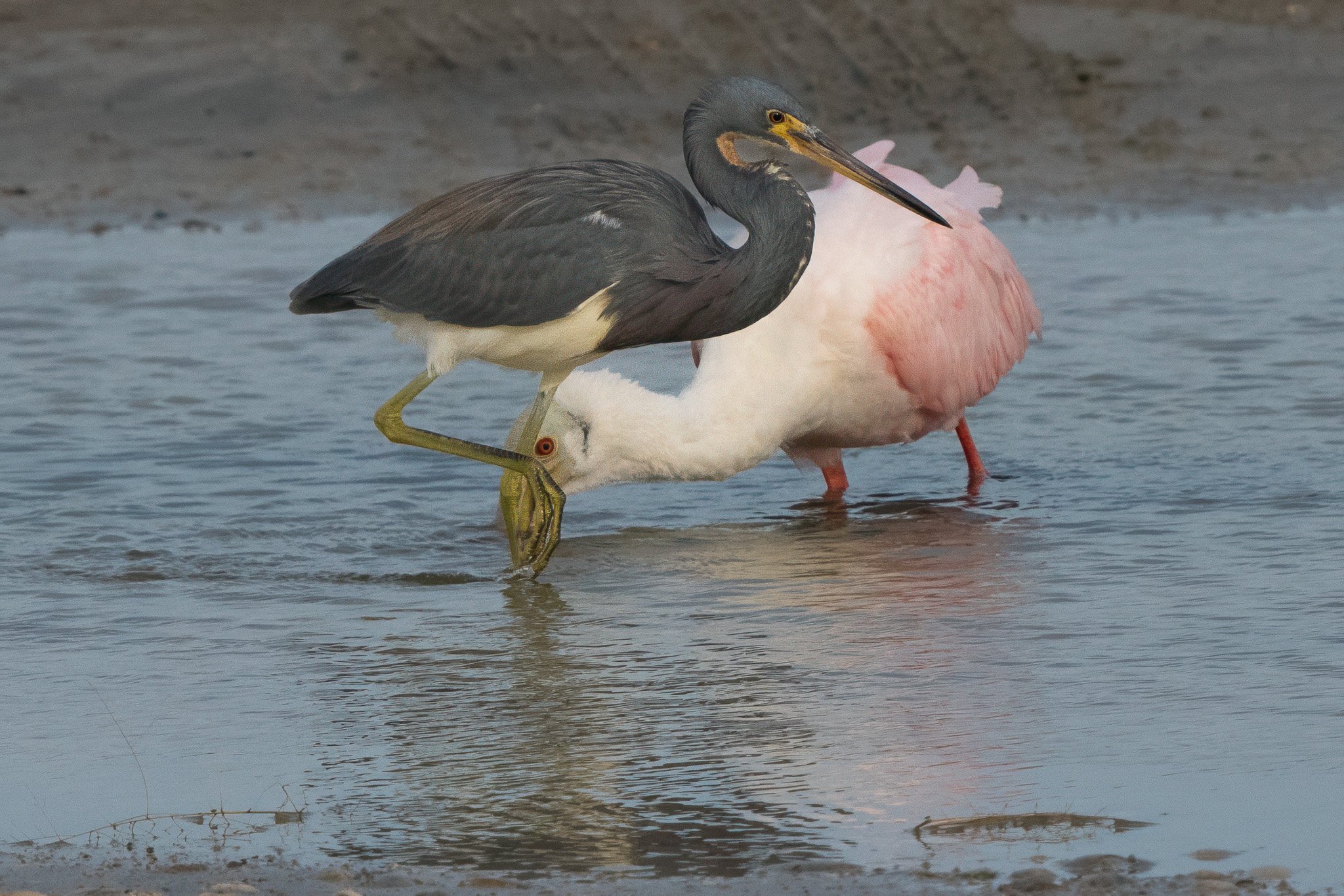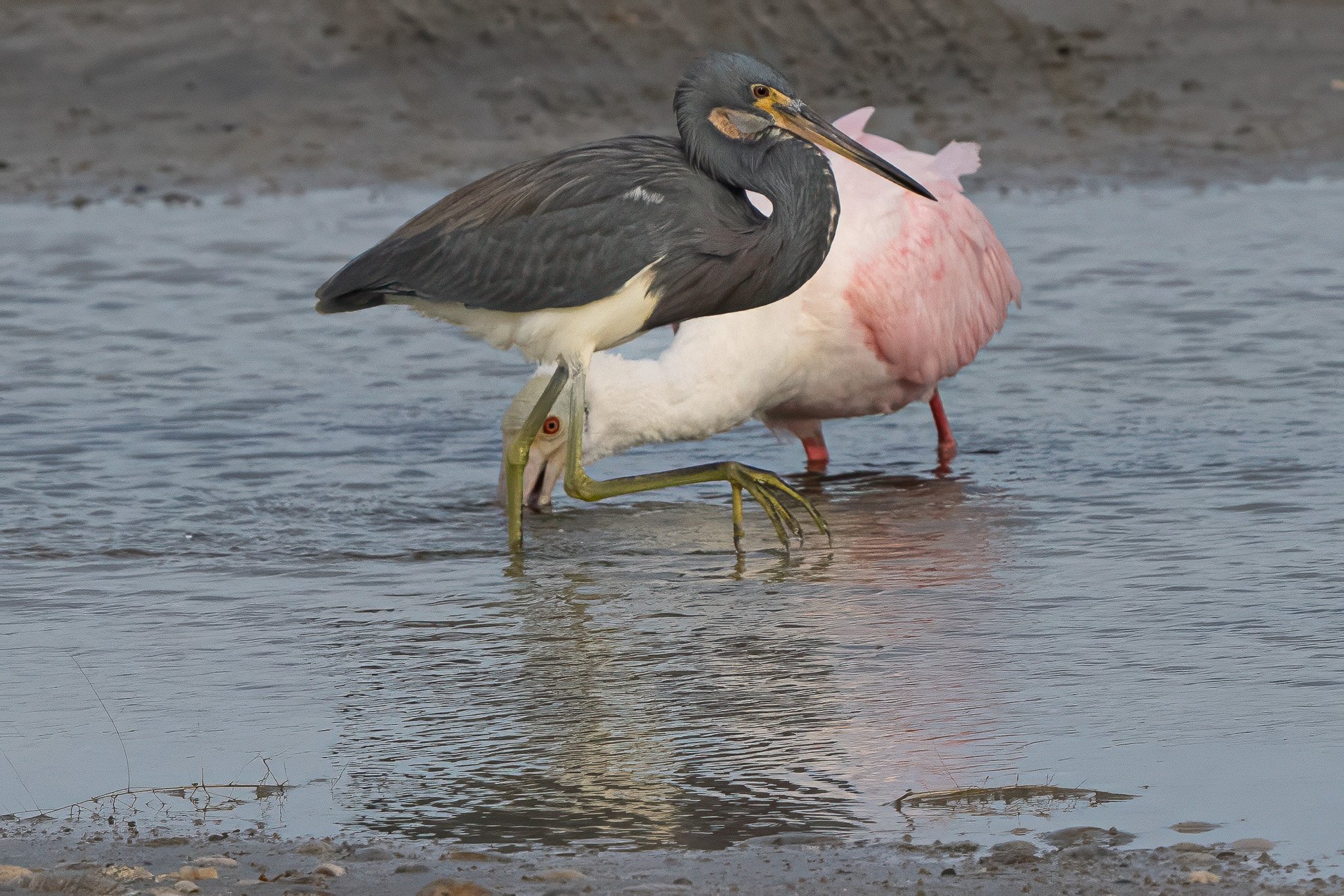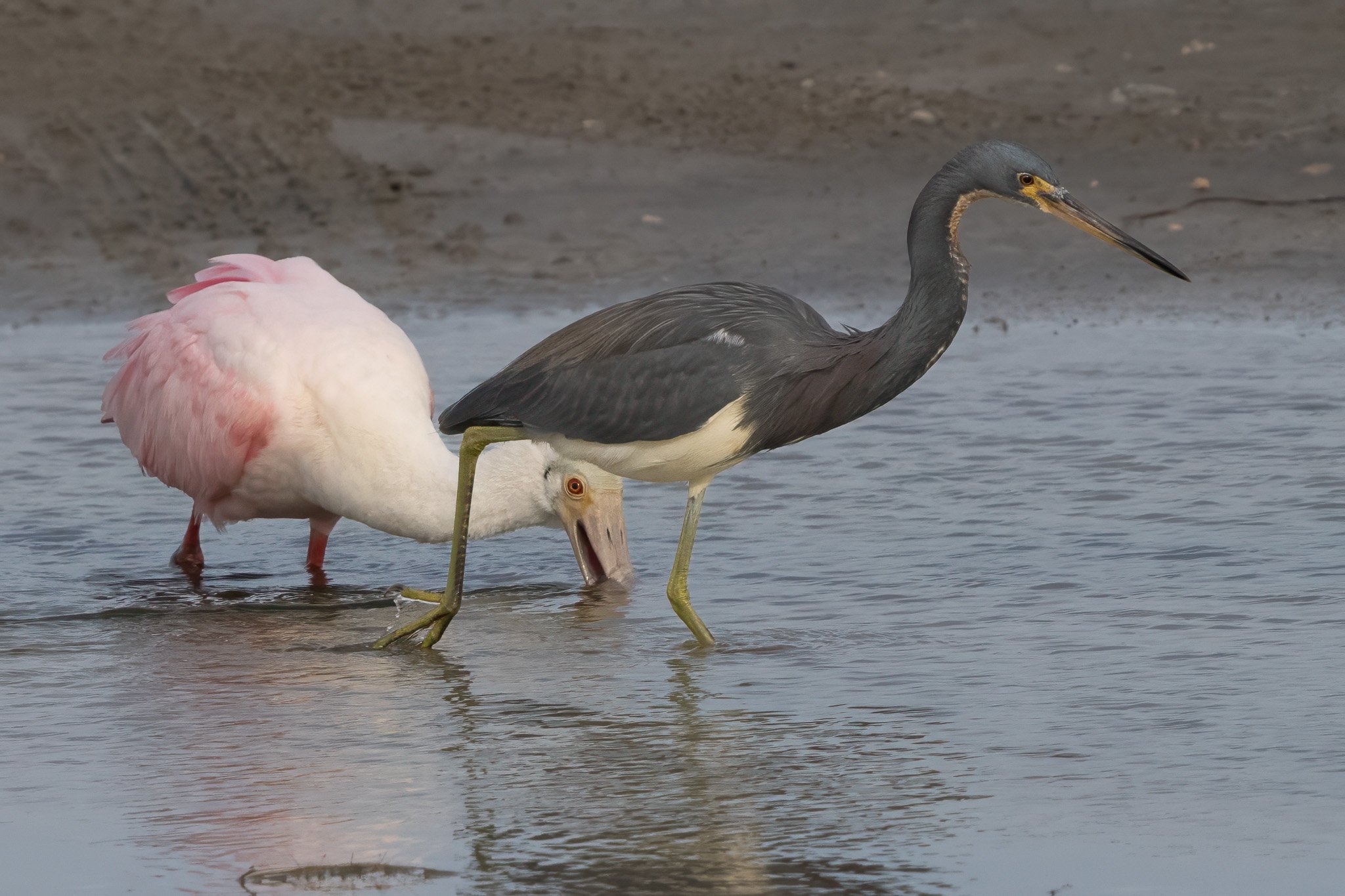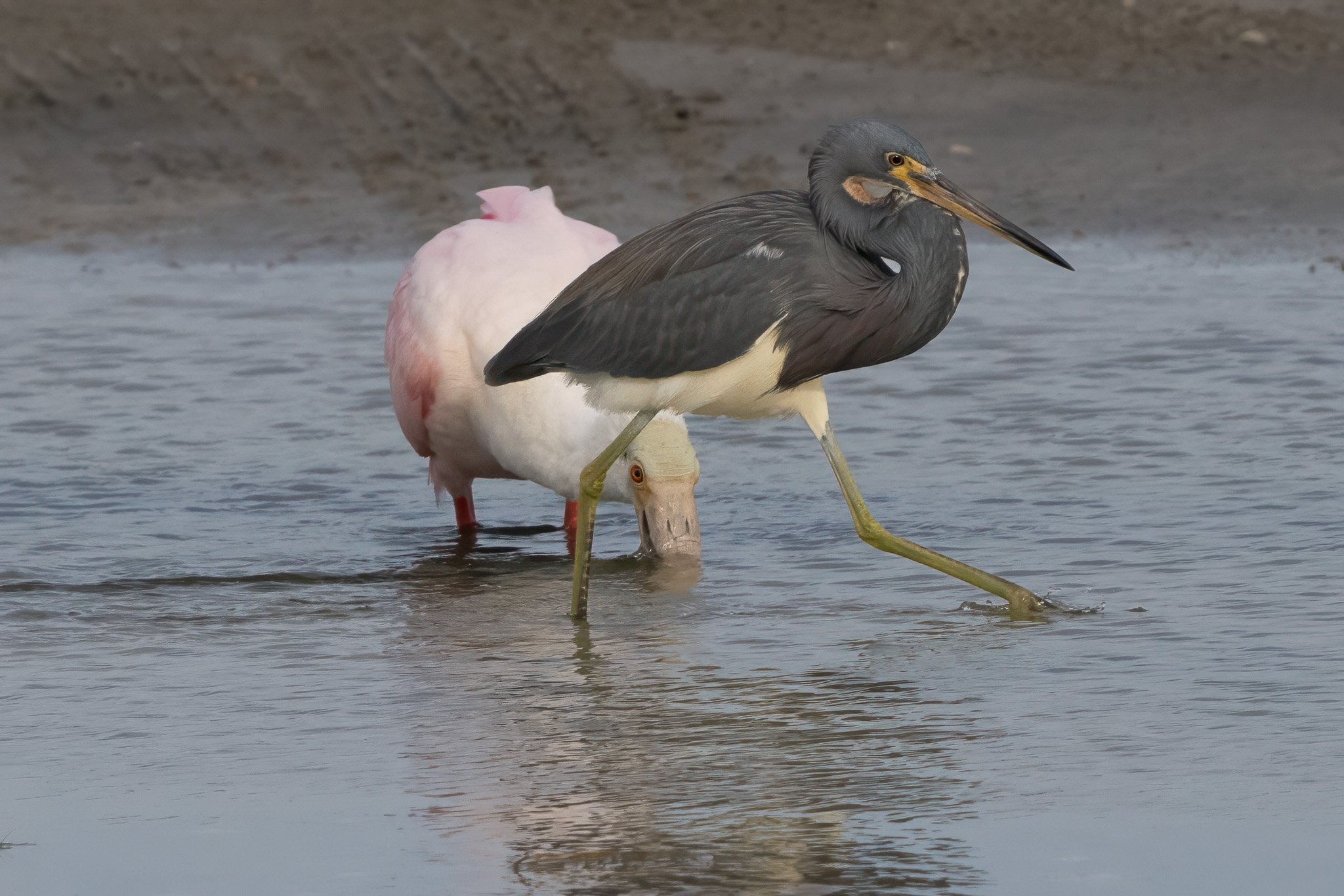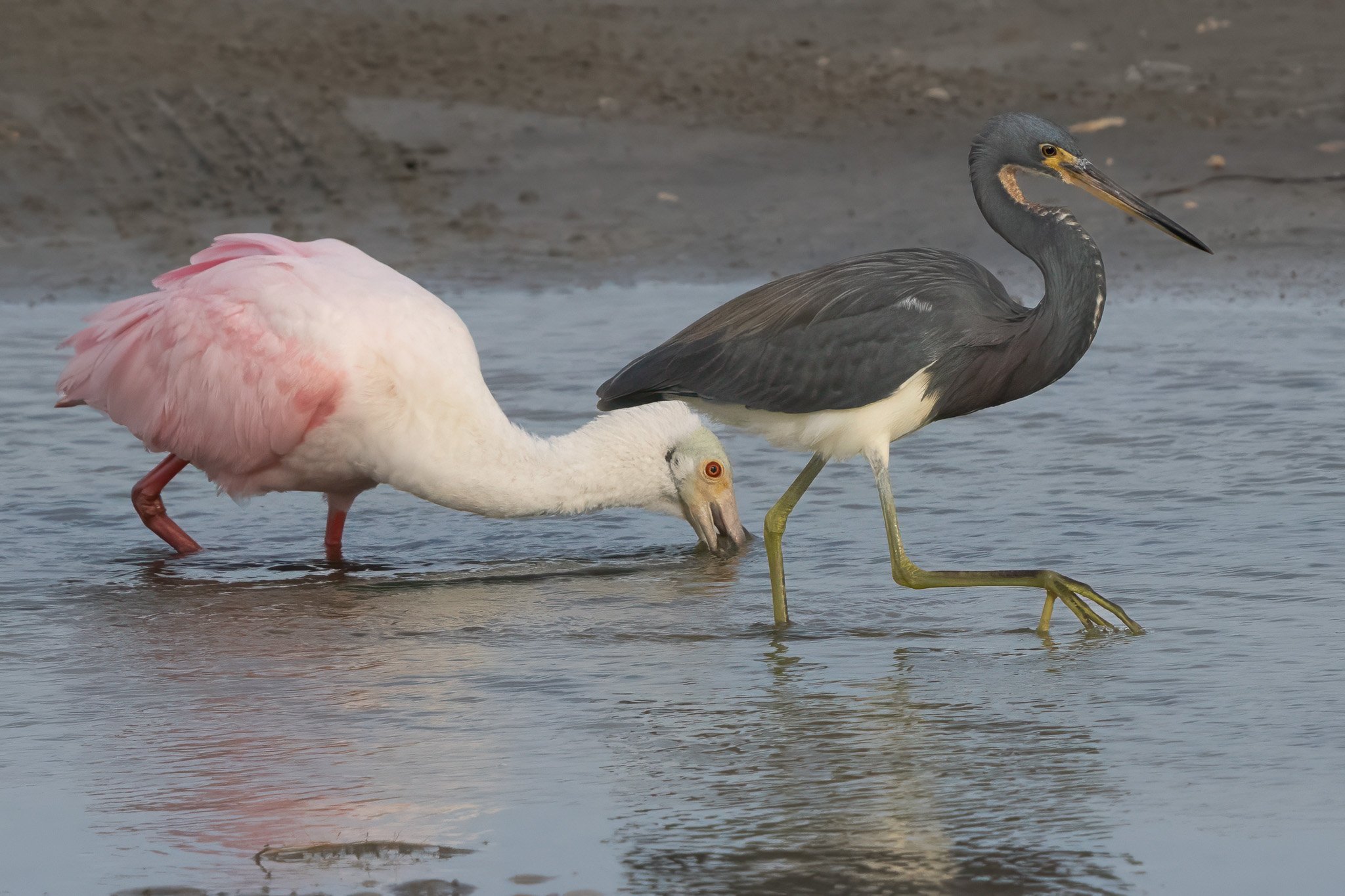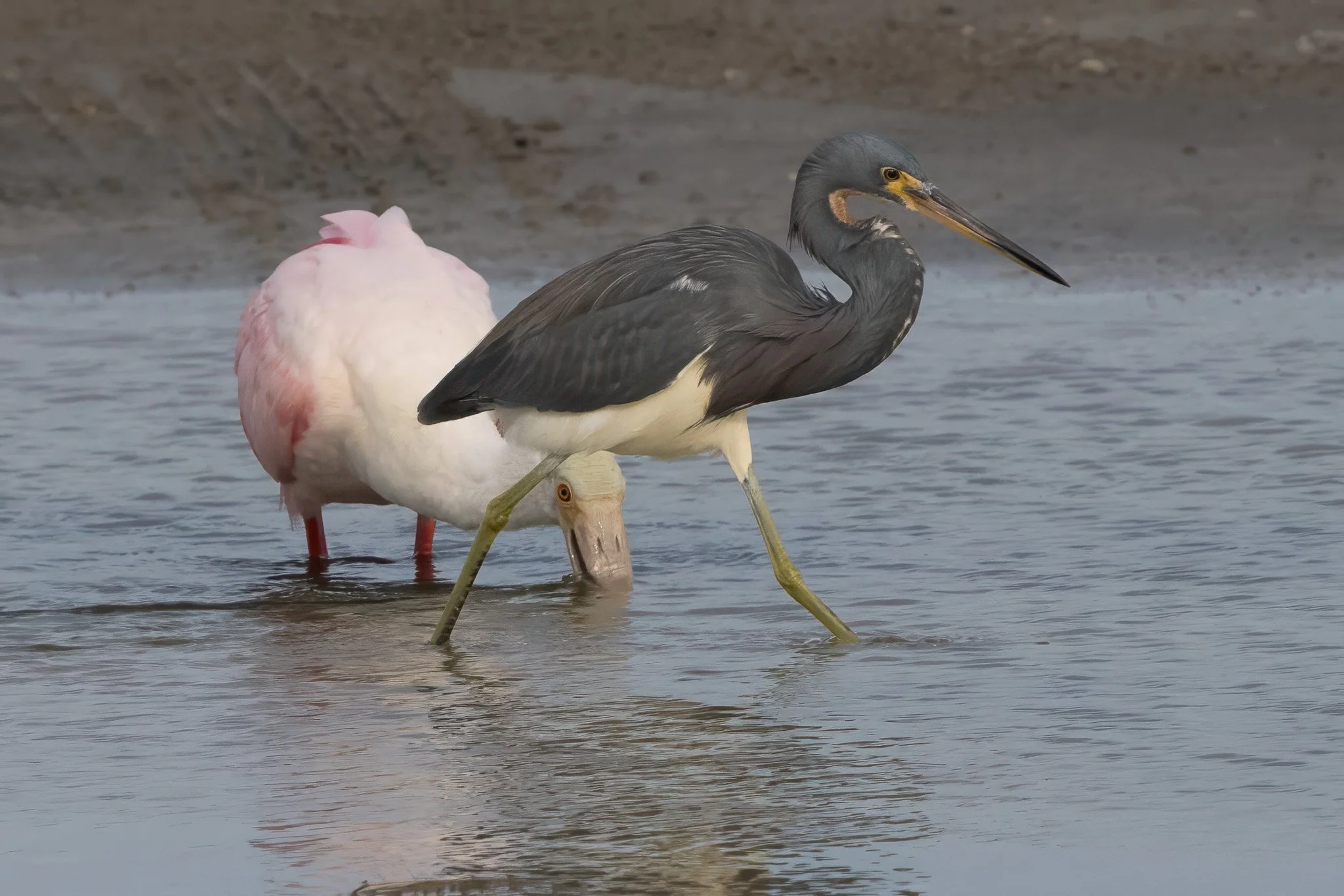The Bay Mudflats on South Pedro Island - Part 2 - Roseate Spoonbill & Great Egret
/The first part of this series presented photos of a Roseate Spoonbill and a Tricolored Heron feeding in close proximity at low tide in a small pool of water on the mudflats on the bay side of South Padre Island. Part 2, this entry, continues with two photos having only a single bird feeding in the frame (the same spoonbill featured in part 1) and 10 additional photos of the bird feeding next to a Great Egret.
Roseate Spoonbill - South Padre Island, TX - January 13, 2024
All of the photos in this series were taken with an Olympus OM-1 camera and a 150 - 400 F/4.5 tc lens.
Focal length varied from 340 - 500 mm, shutter speed from 1/800 sec to 1/1600 sec, and ISO was set to either 800 or 1600.
Roseate Spoonbill (with minnow) - South Padre Island, TX - January 13, 2024
Small minnow, large bird.
Juxtaposition of Roseate Spoonbill and Great Egret - South Padre Island, TX - January 13, 2024
Merriam-Webster defines juxtaposition as the act or an instance of placing two or more things side by side often to compare or contrast or to create an interesting effect. Juxtaposition is often used in photography by placing two or more objects close together to contrast them in an interesting or thought-provoking manner. Photos contrasting new vs old, young vs elderly, straight vs curved, or a bright, sunny landscape with a dark, stormy background are examples.
At low tide a variety of species are often seen feeding in the same small residual pools of water on the mudflats at South Pedro Island. Because of the proximity of the birds in the small pools, I was sometimes able to capture, in the same photo, images of birds of different species, sizes, shapes, and colors. Some photos also illustrate differences in methods of searching for, capturing, and consuming prey. Photos in which the physical features and instances of the behaviors of the Roseate Spoonbill and Great Egret are juxtaposed are shown below.
Roseate Spoonbill and Great Egret (with minnow) - South Padre Island, TX - January 13, 2024
Roseate Spoonbill and Great Egret (with minnow) - South Padre Island, TX - January 13, 2024
Roseate Spoonbill and Great Egret - South Padre Island, TX - January 13, 2024
Roseate Spoonbill and Great Egret - South Padre Island, TX - January 13, 2024
Roseate Spoonbill and Great Egret - South Padre Island, TX - January 13, 2024
Roseate Spoonbill and Great Egret (with minnow) - South Padre Island, TX - January 13, 2024
Roseate Spoonbill and Great Egret (with minnow) - South Padre Island, TX - January 13, 2024
Roseate Spoonbill and Great Egret (with minnow) - South Padre Island, TX - January 13, 2024
Roseate Spoonbill and Great Egret (with minnow) - South Padre Island, TX - January 13, 2024


